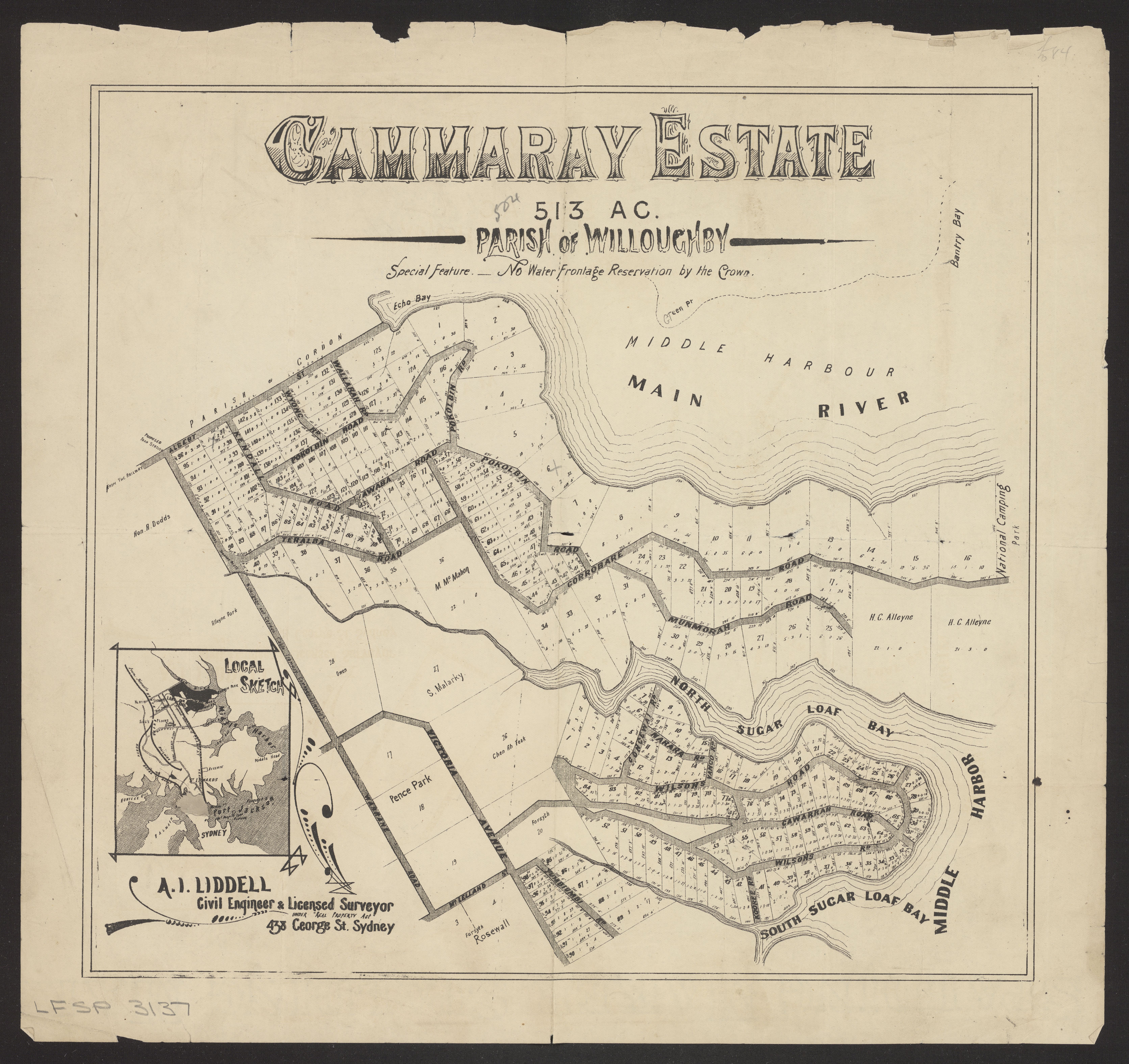In June 1886, the Daily Telegraph published the full prospectus for the Cammaray Estate Land Company Ltd.
This company was established by some had acquired the rights to purchase vast tracts of undeveloped land on the ‘middle harbour peninsulas ‘to the north of the Flat Rock Creek’ was formed to acquire and sell subdivisions of that they . These areas are now better known as Northbridge, Castlecrag, and Castlecove.
The Prospectus states that this Company was …
Formed for the purchase of Five Hundred Acres of Land in the Parish of Willougby, admirably situated for affecting, with large profit to the Company, an advantageous increase in the Suburban area of Sydney, being splendidly adapted for the development of the most beautiful and healthy suburb.
The present Proprietor has agreed to sell the whole of the Cammaray Estate, Willoughby …
The land only requires rendering accessible to ensure realisation of the highest suburban value, to effect of which the capital of the Company is fixed at over the the purchase price in order to admit of the Directors being empowered to apply for 4000 £1 shares in a separate company now in course of formation for effecting connection with the St. Leonards Government cable tramway, which amount invested will admit of the completion of the formation of the proposed Tramway Company, and the early acceptance .. of tenders for the construction of a line of tramway direct from the Cammaray Estate to Milson’s Point
Daily Telegraph (Sydney, NSW, Thursday 24 June 1886 [Trove])
The directors in this Company were
- Russell Barton Esq., M.P.
- John Hawthorne, Esq., M.P.
- John Kidd, Esq., M.P
- Benjamin Jenkins, Esq., J.P (Mayor of St. Leonards)
- Andrew Armstrong, Esq., J.P.

Where it all started
The most succint explanation of how this came about is provided in an article “A Land Agent’s Commission” summarising a court case between a Henry Woods and Andrew Armstrong published in “Australian Town and Country Journal”. It reads
A Land Agent’s Commission.
In, the No. 1 Jury Court, on July I0, the suit brought by Henry E. Carson Woods against Andrew Armstrong, to recover £1200 as commission on the sale of some land at North Shore, was concluded. It appeared that Armstrong was the owner of a large property known as the Cammeray Estate, and in 1887 when Woods projected a trip to England Arm-strong suggested that he might be able to dispose of the estate to English capitalists. On the voyage to England Woods made the acquaintance of Lord Hindlip, before whose notice the land was brought as a good “spec,” but nothing more came of it then. In the course of the following year Lord Hindlip visited the colony and the land was again brought before his notice, when Armstrong gave plaintiff instructions to offer the property, consisting of 504 acres, at £100 per acre; ” and the plaintiff was to receive a – commission of 2½ per cent, on the sale. Lord Hindlip however, deferred to bite until he had consulted his solicitor. When the defendant came to know that his lordship was thus cautiously dealing, he remarked to plaintiff, “Billyard is his solicitor; the thing ‘ is now how to impress Billyard.'” Some time afterward plaintiff heard some thing, and he went to see Armstrong, when he said, ” I hear you have sold the estate to Hindlip -is that true ?” Defendant said, ” I sold it to Billyard, but I believe Hindlip is in it.” Plaintiff then said, “It’s a Swindle.”
A great quantity of evidence was taken, after which the jury gave a verdict for the plaintiff for the full amount.
(Sydney, NSW, Sat 18 Jul 1891)
This article provides the linkage between Andrew Armstrong, C.A.M. Billyard-Peake, and Lord Hinlip
